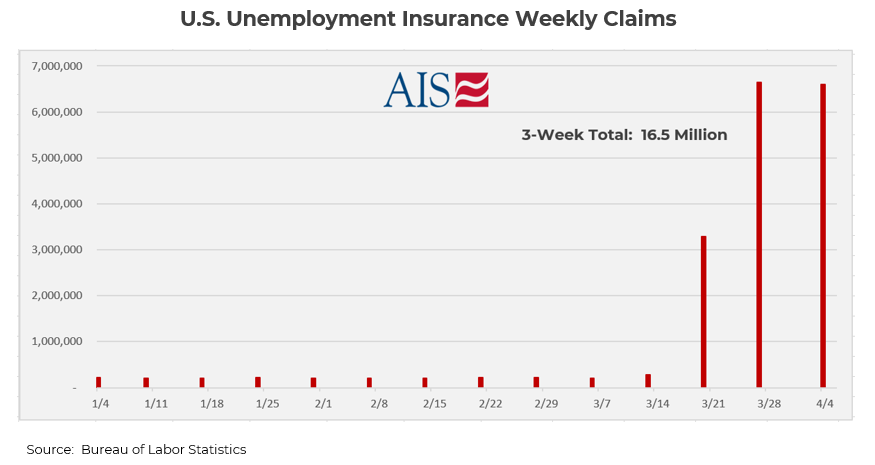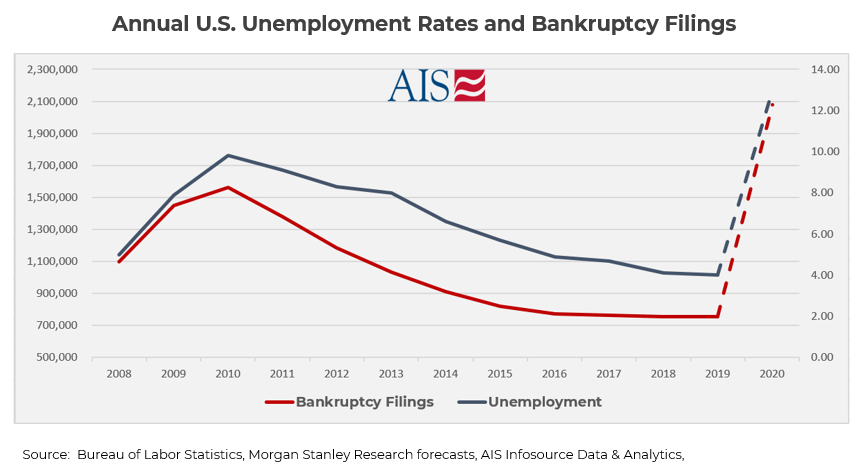CommentarY
April 14th, 2020
The COVID-19 Pandemic's Impact on Bankruptcy Volumes
As the figures of confirmed COVID -19 cases in the United States continue to grow, the true extent of this crisis is becoming more and more apparent. Since the immediate focus of the government is on the health and safety of its citizens, almost all Americans are ordered to stay home. While it will surely help us to get through this immediate health crisis, its wake could be felt for years to come.
As doors to firms, restaurants, retail stores, theaters, and other establishments are closed, either voluntarily or in response to emergency orders, the immediate brunt of the economic fallout is borne by workers and small businesses. According to Bloomberg, the sudden stop in activity has experts forecasting that the economy will experience its largest contraction in the second quarter of 2020. Bloomberg analysts anticipate around 20 million people will be unemployed by July.
Both the Federal Reserve and the government have taken steps to lessen the economic hardship. In order to keep markets functioning and borrowing costs low, the central bank lowered benchmark interest rates to near zero and agreed to buy unlimited amounts of Treasury bonds and mortgage-backed securities. President Trump signed the largest relief package in history, which would provide $2 trillion in support to small businesses and many Americans. These are great measures, but will the financial aid arrive fast enough?
As we begin to see the statistical picture and the lockdown persist, we understand it will be more difficult for the economy to recover. Experts such as Forbes, Bloomberg and S&P say the recession has already arrived. Many might disagree with this statement, as historically, the term recession has only been used upon two consecutive quarters of decline in a country’s gross domestic product (GDP). However, it’s difficult not to address it as a recession when financial models continue to reflect consistent data.
Unemployment Spikes


Based on the data above, AIS expects a surge in bankruptcies in 2020. With multiple relief programs put in place to slow the impact, one could anticipate a lag. However, now is the time to start preparing. Many creditors have started evaluating strategic partnerships to help process large volumes, in the event bankruptcies were to spike. Partners like AIS , who leverage legal technology and offer uninterrupted service and at a competitive price, will be best positioned to support financial institutions with overflow work.
